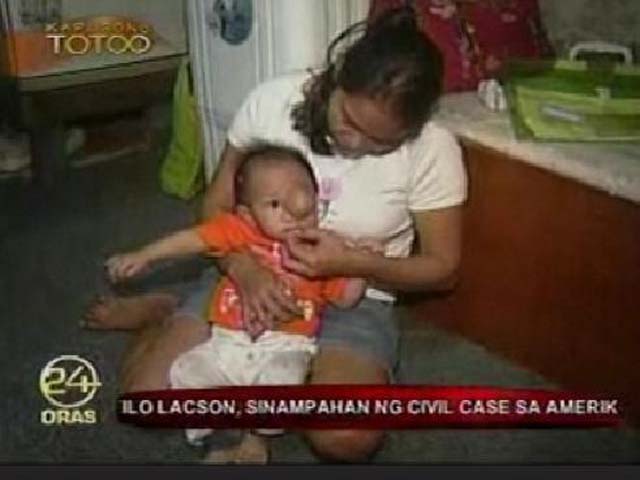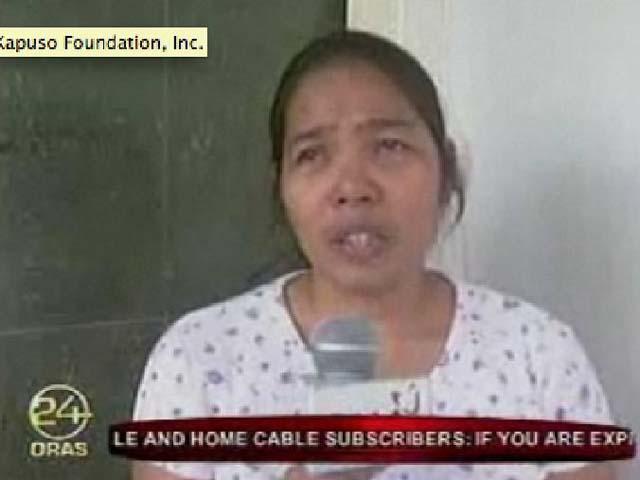During the Holy Week this month, Gawad Kalinga hosts their seventh Bayani Challenge, a flagship activity in their annual calendar attracting a massive turnout of volunteers to build houses for the poor. Held over five days in 34 provinces, this year’s event aims to exceed last year’s 10,000 volunteers, with about 2,000 families receiving new homes. Certainly, the savvy scheduling of the Bayani Challenge to coincide with the Easter holidays (with their traditional ethos of self-sacrifice and charity) makes for a viable alternative to summer staples such as Boracay beach-bumming and Sagada mountain treks. In fact GK is quite conscious that their main competition for the attention and commitment of prospective volunteers is the highly successful “More Fun in the Philippines” campaign by the Department of Tourism. On the GK website, the Bayani Challenge is advertised in the language of a tourism campaign, as people are attracted to sign up with the promise of “embarking on an adventure..., a 5-day test of courage, endurance and love of country.” And just as the DOT strategically targets international tourism to the Philippines, foreigners and overseas Filipinos are likewise invited to “travel halfway across the globe to witness inspiring transformations on the ground." Adopting the language of tourism marketing in the ordinary grammar of charity communications involves an obvious shift in focus from the recipients’ difficult situation to the positive benefits that volunteers enjoy from their “adventure”. In many ways, this is a subtle shift, yet it is one which carries profound – and worrying – social and moral consequences. Traditional Campaigns: Voice of the Sufferer Drawing donors and volunteers to pay attention to a social cause has not always been done in this way. In the Philippines, there is a great tradition of fundraising for the poor that hears out and amplifies their voices. GMA’s Kapuso Foundation and ABS-CBN’s Bantay Bata, two of the country’s “most trusted” charity organizations according to a 2007 Survey on Giving, have historically crafted their charity appeals (often seen in the primetime news) to include images of their recipients within their everyday lives. Stories of illness and injury, death and tragedy, are typically situated in the domestic sphere of the prospective recipient. The camera lingers and hovers, observes and testifies, to the person’s condition of poverty and depravity. In fact, the classic image of the traditional charity appeal in the Philippines is the child with a body enlargement caused by hydrocephalus. The close-up shots of the camera satisfy what the philosopher Daniel Dayan calls a “curiosity of the flesh,” thereby authenticating the child’s helplessness and deservedness of attention and donation.

Kapuso Foundation and Bantay Bata, following too the masa-oriented ethos of their broadcast networks, give voice to the recipient, or at least to their mother, who then admits to her inability to care for her child by requesting for viewers’ donations. Her material lack and her excess of emotion become embodied in her shedding of tears before the close-up gaze of the camera. Compassionate viewers at home take pity at the child and identify with the destitute mother, either from their own experience of being mothers themselves or by being children to their own mothers.

Such a practice of communicating poor people’s suffering is not devoid of controversy, as evident in the common upper/middle-class critique of exploitation: “Why does television need to show poverty and suffering at its most gruesome and pitiful? Why do we need to compel the poor to shed tears for public consumption? Why does Filipino television need to show suffering all the time: from game shows to talk shows to soap opera and news?”
Contemporary Campaigns: Voice of the Volunteer It is in the context of these difficult questions of development and media ethics, along with broader
“post-humanitarian” trends such as the corporatization of charitable NGOs around the world, that Gawad Kalinga and similar organizations have developed new ways to attract donors and volunteers. In current fundraising videos and advertisements, the speaking voice most often heard is that of the individual donor, corporate sponsor or celebrity. Their testimony works not so much to ventriloquize the destitute sufferer and bear witness to human suffering, but to express the personal benefits that they themselves gained from the experience of volunteering: from “joy and happiness” to being “spiritually inspired”.

Although there is a long history of celebrity-run charitable organizations in the country, from Mel Tiangco’s Kapuso Foundation and Tina Monzon-Palma’s Bantay Bata to Rosa Rosal’s Philippine Red Cross, celebrities’ participation have dramatically devolved from long-term leadership or managerial roles (Tiangco, Monzon-Palma, Rosal) to short-term ceremonial roles. Since 2011, GMA Network actress Marian Rivera has acted as “the New Face” of the Philippine Red Cross, yet unlike Rosal her involvement is event-based, with the press conference rather than the boardroom or the office as the primary space she would share with the organization. In this video below, her involvement with the Red Cross Million Volunteer Run is discussed alongside her preference of cologne and skincare product. [
Video link here.] Another recent trend in charity advertising has been fictional storytelling through the use of visual effects, hyperreal cinematography and paid actors, such as in Gawad Kalinga’s “Bayanihan” advert. [
Video link here.] The video begins with tableau vivants of the Filipino countryside, shot through a sepia filter to heighten cinematic effect, mimicking techniques in fictional drama and advertising. The video captures the historical–in this case, mythical–practice of bayanihan, which is the transportation of straw houses via bamboo stilts in what we see is a happy, multi-religious community. The narrative twist is our discovery that the transportation of the house is not from one place to another as in the classic bayanihan practice, but in the demolition of these houses as they are thrown over a cliff. We witness houses made of yero, not unlike the shanties we see in urban squatters’ areas, break apart in slow-motion and fall to the dark abyss that is the edge of the screen. “Together We Can End Poverty / Share Time, Talent and Resources” appear onscreen before the logo of Gawad Kalinga.
Self-Centered Communication In many ways, the video above crystallizes the current ethics of giving and volunteering that actively projects upper-class fantasies of development and nation-building rather than engaging with the facts of particular social causes or the experiences of individual recipients. Through the use of fictionalization, we literally see what the scholar Neferti Tadiar might call a “fantasy production,” in this case the eradication of structural poverty through a simplified call for unity and singularity. The “violence” in this message lies of course in the relationship between the fictional and real destruction of homes. The dramatized event in the ad is almost impossible to decontextualize from everyday images we see of urban poor housing demolition in the Metro done for the purpose of real estate development or city beautification. In addition, the use of symbolism in the destruction of homes as standing for the destruction of poverty not only oversimplifies the causes and consequences of income inequality, but exacerbates social divides between rich and poor. In this story of bayanihan, poverty is eradicated by the erasure of the visible properties of poverty from plain sight, just as the voices of the poor have come to be silenced by privileged people talking only about their own dreams and adventures. In my research project, I discovered that Gawad Kalinga’s way of campaigning–with its emphasis on positive images and the experience of the volunteer–resonates with many upper- and upper-middle-class respondents. Since the emotions evoked are positive, and the invitation to contemplate lives far different from their own are minimal, viewers stay within their psychological and moral comfort zone. The question this raises is whether we should be satisfied with measuring the success of charity campaigns in terms of donor and volunteer numbers, without factoring in the moral cost of self-centered communication. Although older forms of charity advertising may shock and disturb, they at least invite us inside people’s homes rather than immediately propose to demolish them. In seeing and hearing the sick child and the tearful mother, the difficult duty to listen and understand is imposed. Now as we watch only the celebrity and the donor in their adventure, the task to sign up and volunteer could not but appear radically simple.
– GMA News About the author: Dr Jonathan Corpus Ong is a media sociologist whose PhD dissertation in the University of Cambridge examined viewers' responses to poverty and suffering on television. Contact him at Twitter @jonathan_c_ong. 





